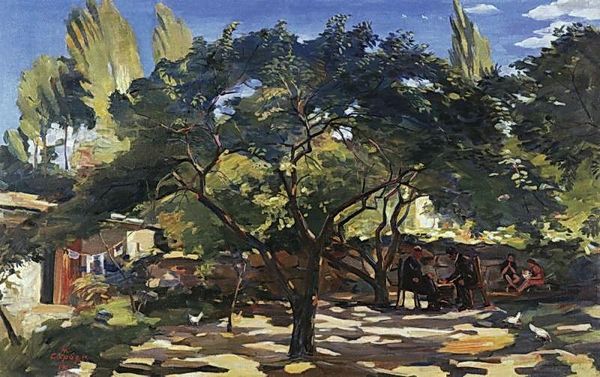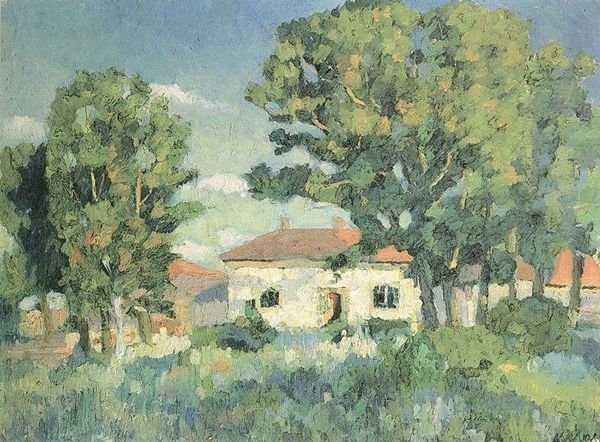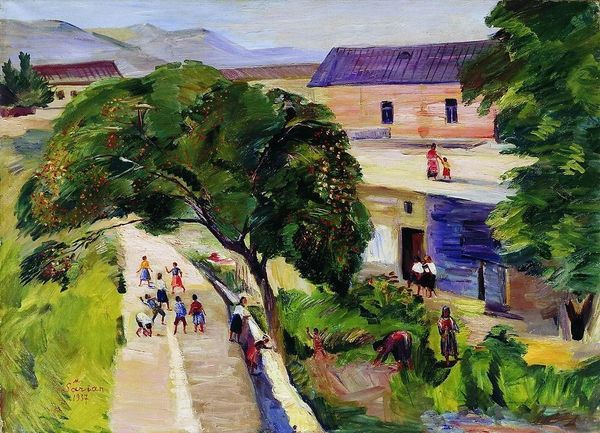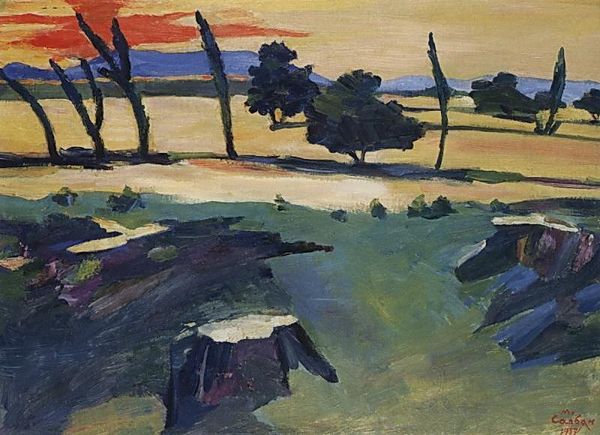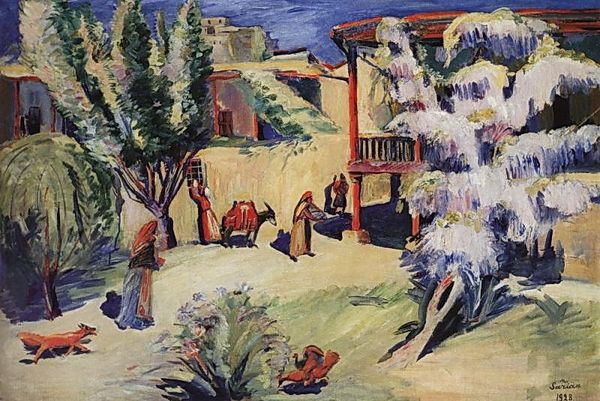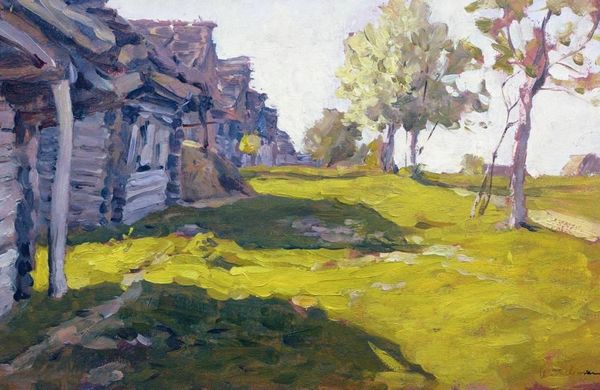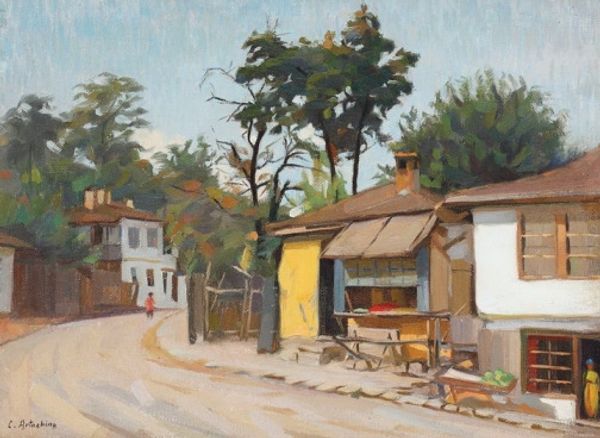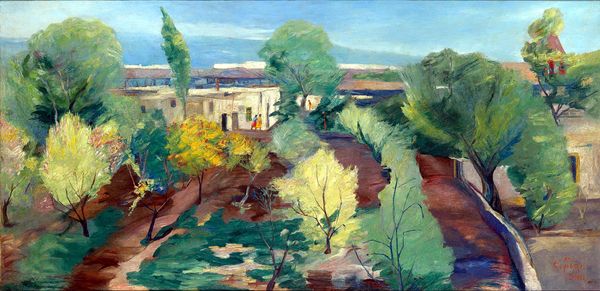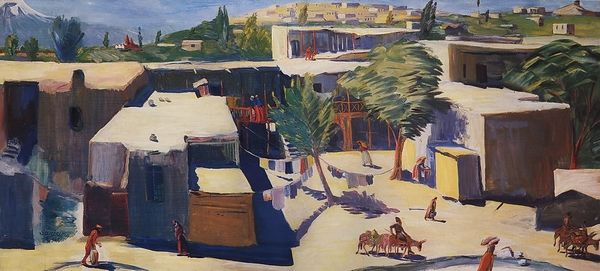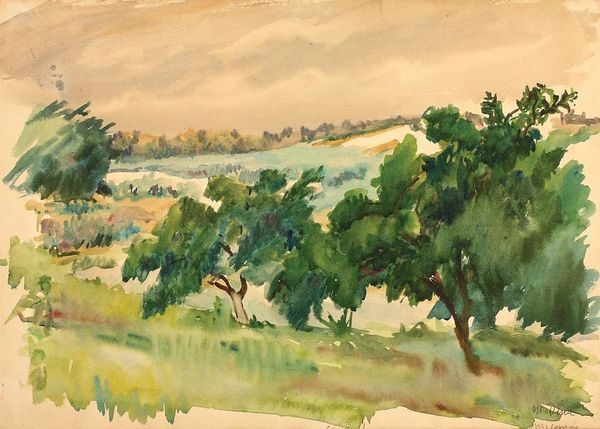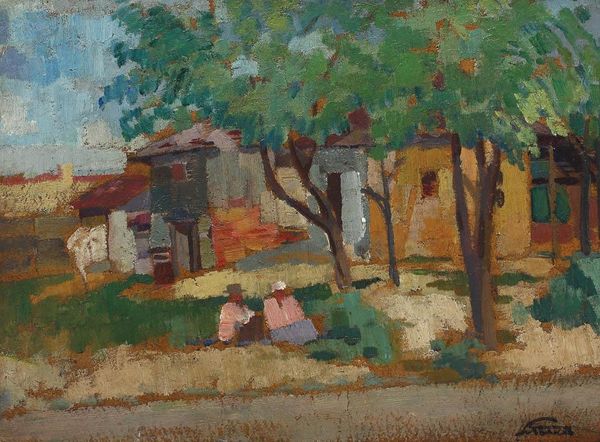
Copyright: Martiros Sarian,Fair Use
Curator: Oh, that gives me a sense of bright heat, filtered through trees—it must be midday, somewhere lovely and dry. Editor: It’s definitely evoking a particular kind of place. This is Martiros Sarian's "April", painted in 1947 using oil paint. He captures a cityscape in Armenia, with very clear post-impressionist influences. Curator: Yerevan, perhaps? Or Etchmiadzin? The colours remind me so much of those ancient apricot orchards I saw there, shimmering under the sun... The air just vibrates. Editor: It makes me think about the paint itself—see how thickly it’s applied in certain areas? You can almost trace the brushstrokes. What’s fascinating to me is that Sarian was really interested in translating the vibrancy of Armenian folk art traditions into painting. He reinterpreted craft, really, to create something so compelling on canvas. Curator: He builds up the feeling so cleverly—the shadowed road, the dusty colours of the buildings, they all focus my attention towards the back and pull you in, don't they? And is that a woman tending a garden? There's a very peaceful narrative being evoked. I think I am feeling a sort of deep longing now. It must be the feeling that there is something real that one almost remembers, almost knew... Editor: Note the choice of materials during the mid-20th century. Post-war, there was an active dialogue between available materials, industrial production, and the desire to reconnect with simpler traditions. That tension is literally embodied in the thick oil paint against this traditional urban vista. Look at the details in the construction and how Sarian has depicted labor as a backdrop to ordinary life. Curator: Beautiful. Now I feel even more deeply that sense of somewhere I almost know—an intimate secret glimpsed for just a second and that gives the impression I am coming home. Thank you. Editor: Considering "April" beyond just pure representation adds a layer of understanding of post-war artmaking—where do we locate value? Thanks for sharing your emotional landscape.
Comments
No comments
Be the first to comment and join the conversation on the ultimate creative platform.
